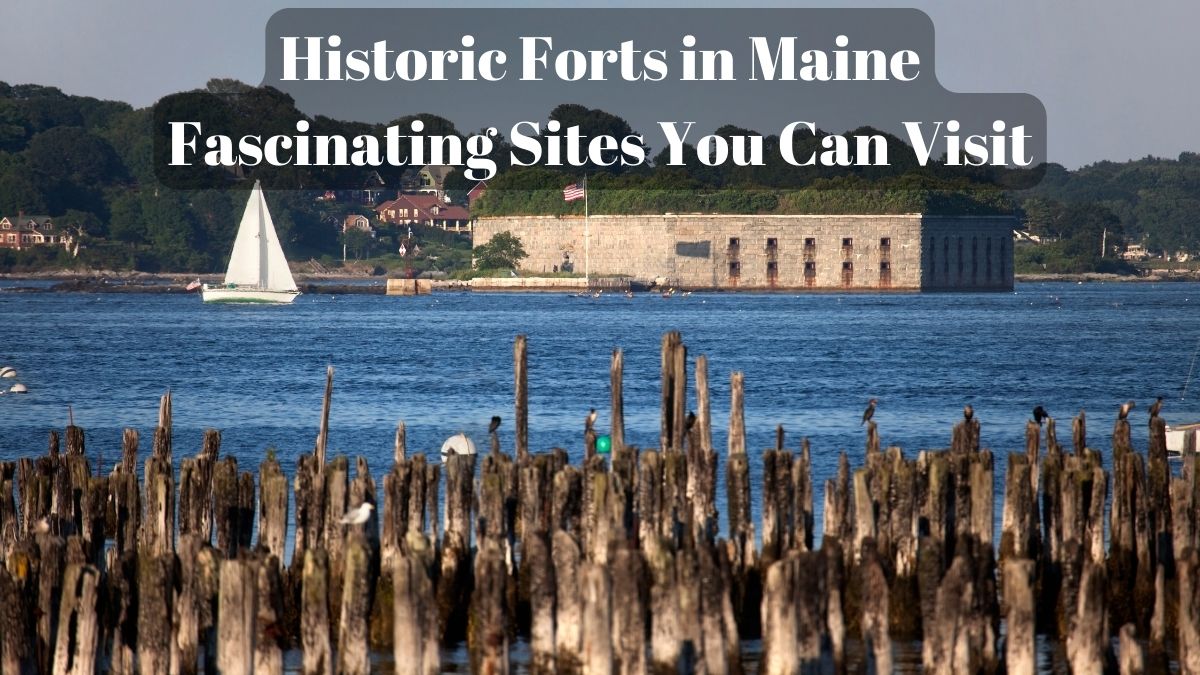Maine’s rich history includes an array of forts that have served various military purposes, reflecting the region’s strategic importance through times of conflict and peace.
From the colonial days to World War II, these historic structures have been linked to significant events such as the American Revolution, the Aroostook War, and the Spanish-American War.
Nestled within the beautiful New England landscape, Maine’s many forts hold fascinating stories and serve as landmarks and tourist attractions.
Central to Maine’s defensive heritage are forts such as Fort Knox, Fort Halifax, and Fort George. Located at the mouth of the Kennebec River, Fort Knox was designed for coastal defense during the Civil War and later served in both World Wars.
Fort George, situated at the entrance to Penobscot Bay, and Fort Halifax, on the banks of the Kennebec River, also played their parts in military history. These forts and others have earned a spot on the National Register of Historic Places and are revered as national historic landmarks.
Visitors to Maine will find an intriguing blend of history, architecture, and natural beauty at these forts.
The granite blocks of Fort William Henry and Fort Popham’s unique construction provide a look into past military tactics. Nonprofits like Friends of Fort Gorges and Friends of Castine Fortifications preserve these sites, ensuring future generations can learn from them.
12 Historic Forts in Maine That You Can Visit
Fort Popham
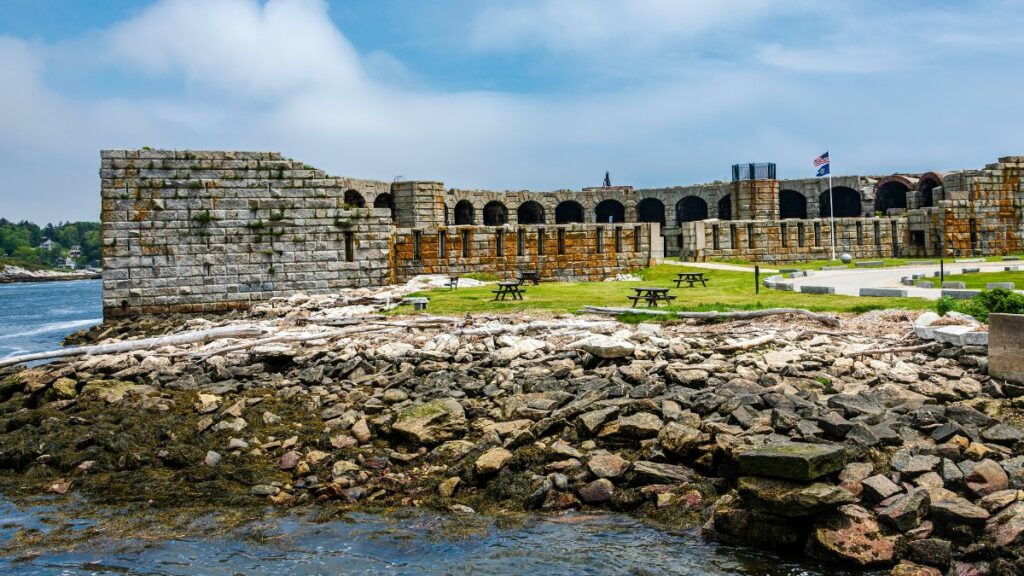
Fort Popham, situated at the mouth of the Kennebec River, holds a significant place in Maine’s rich history as a coastal defense fortification dating back to the Civil War era. Its construction was undertaken with the primary objective of safeguarding Maine’s coastline in the event of potential conflicts. The fort, made predominantly of granite, is a testament to the defensive strategies employed during that time.
Originally established as part of a system of forts known as the Third System of coastal defense, Fort Popham played a crucial role in protecting Maine’s shores. The fort was named after George Popham, a prominent figure in Maine’s colonial history who led one of the earliest English settlements in the region.
Visiting Fort Popham
Today, Fort Popham has been preserved and transformed into a state historic site, offering visitors a glimpse into Maine’s colonial past. Stepping into the fort, visitors are transported back to an era when the coastlines were heavily fortified to defend against potential attacks.
The knowledgeable guides, well-versed in the history of the fort and its significance, lead tours that provide valuable insights into the fort’s construction, its strategic importance, and the challenges the soldiers there face.
As visitors explore the fort’s intricate passageways, gun emplacements, and artillery rooms, they understand the military tactics employed during the Civil War and the evolving nature of the coastal defense. The fort’s architectural grandeur, with its sturdy granite walls and formidable cannons, showcases the engineering expertise and craftsmanship of the time.
Fort Knox
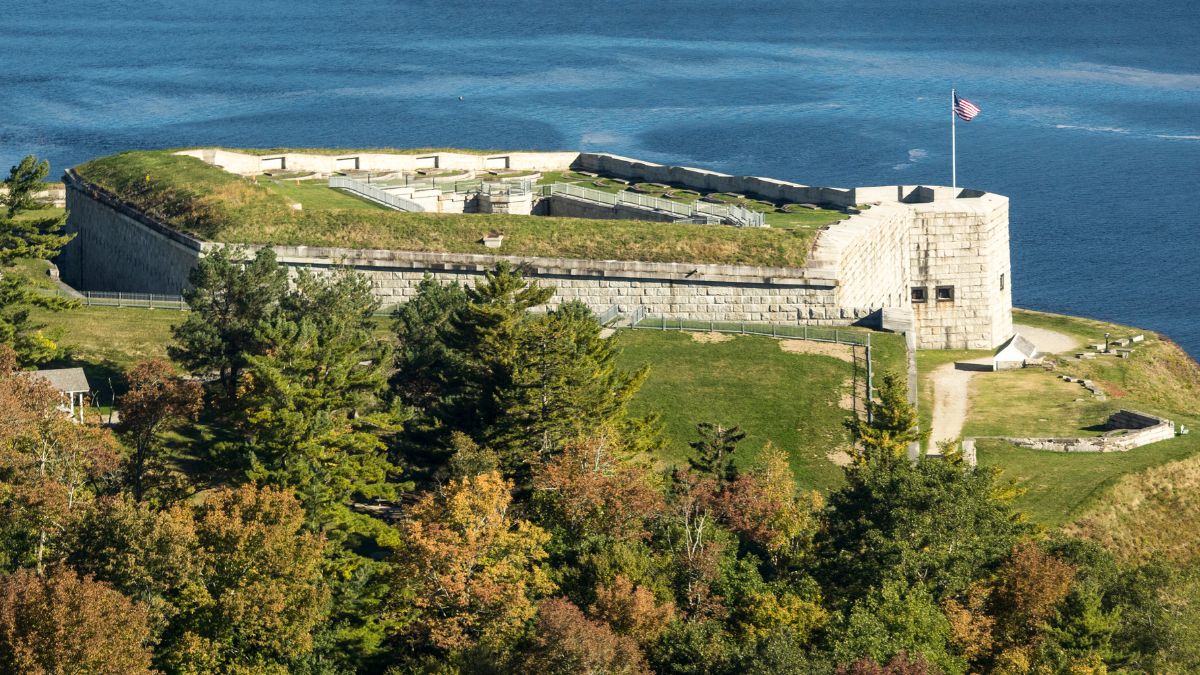
Fort Knox, an imposing granite fort perched on the banks of the Penobscot River, holds a prominent place in New England’s military history. Built during the mid-19th century, the fort was named after Major General Henry Knox, who played a crucial role in the American Revolutionary War and served as the first United States Secretary of War.
Constructed with the primary purpose of safeguarding the coastline, Fort Knox was a testament to the strategic importance of the Penobscot River and its vital role in defending the region. During the Civil War, the fort played a significant role in fortifying Maine’s coastal defenses and deterring potential threats from maritime conflicts.
Designated as a national historic landmark, Fort Knox offers a captivating experience for tourists eager to delve into the United States military history. The fort’s sturdy granite walls and intricate architecture showcase the craftsmanship and engineering prowess of the time. Exploring its labyrinthine passageways, visitors can imagine the daily life of soldiers stationed within its walls and gain insights into their challenges.
Historical Significance of Fort Knox
The fort’s historical significance is complemented by its stunning natural surroundings. Set against the backdrop of the Penobscot River, visitors are treated to breathtaking views of the waterway and the picturesque landscape beyond. The location of Fort Knox offers a serene and peaceful ambiance, allowing visitors to reflect on the fort’s historical importance and appreciate the area’s natural beauty.
To enhance the visitor experience, Fort Knox features a modern and informative visitor center. The visitor center serves as the gateway to the fort, providing a wealth of information about its history, construction, and significance. Knowledgeable staff members are on hand to answer questions and offer insights, further enriching visitors’ understanding of the fort’s historical context.
The visitor center’s interactive exhibits, artifacts, and multimedia presentations engage visitors of all ages, bringing the fort’s history to life. Through displays and interpretive panels, visitors can learn about the fort’s role in defending the region, the weaponry and technology utilized during its operation, and the lives of the soldiers who served there.
Guided tours led by educated tour guides are also available, comprehensively exploring the fort’s interior and exterior. These tours offer visitors a deeper understanding of the fort’s architecture, its strategic placement on the Penobscot River, and its impact on the region’s defense.
Fort Knox hosts various special events throughout the year. Something exciting is always happening at the fort, from reenactments and living history demonstrations to cultural festivals and art exhibits. These events give visitors a unique opportunity to immerse themselves in the historical atmosphere and dynamically and interactively experience the fort.
Fort William Henry
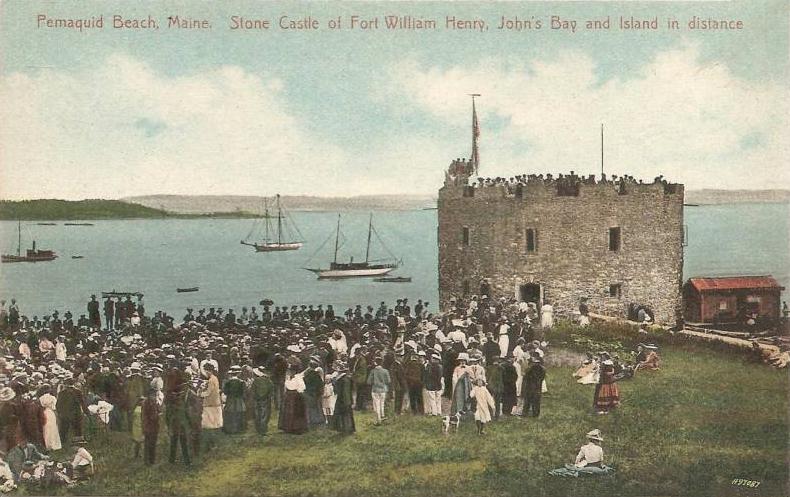
Fort William Henry is an important site of historical interest in Maine. This colonial-era fortification was strategically situated at the Penobscot River and Penobscot Bay confluence. During the turbulent times of the American Revolution, the fort was constructed to serve as a deterrent against French and Native American forces, symbolizing the tension and territorial disputes prevalent in that era.
The fort’s geographical location suggests that it held a potentially key defensive position. The meeting point of the Penobscot River and Penobscot Bay could have been a strategic route for transportation and commerce, thus holding economic and military significance.
It’s worth noting that while Fort William Henry was never engaged in any recorded military conflicts, the fort was a powerful symbol of deterrence and a beacon of security for the region’s settlers.
Fort’s Construction
In constructing Fort William Henry, the colonial authorities were making a clear statement of intent to protect their territories from potential incursions. Despite its non-participation in battles, the fort played an indirect role in the American Revolution, mainly by boosting morale, supporting settlement growth, and showcasing British colonial resolve against potential French and Native American threats.
The fort’s architecture and design likely reflect the military strategies and technologies of its time. The materials used, the size and placement of the fort, and the defensive mechanisms employed would provide insights into colonial-era military engineering.
Fort William Henry Today
Today, Fort William Henry is a testament to the historical tensions and the struggle for power and control during the American Revolution. Its significance extends beyond its military implications, providing a window into the social and political climate of the time.
As a historic site, visitors can connect with the past and better understand the complexities and challenges faced during one of the most pivotal periods in American history.
Despite the passage of centuries, Fort William Henry continues to hold an important place in the cultural and historical identity of Maine, underscoring the region’s early history, its strategic importance, and the shared past of its people. The fort’s legacy, while rooted in a time of conflict, is integral to the story of American independence, encapsulating the struggles, determination, and resilience that characterized this era.
Fort McClary
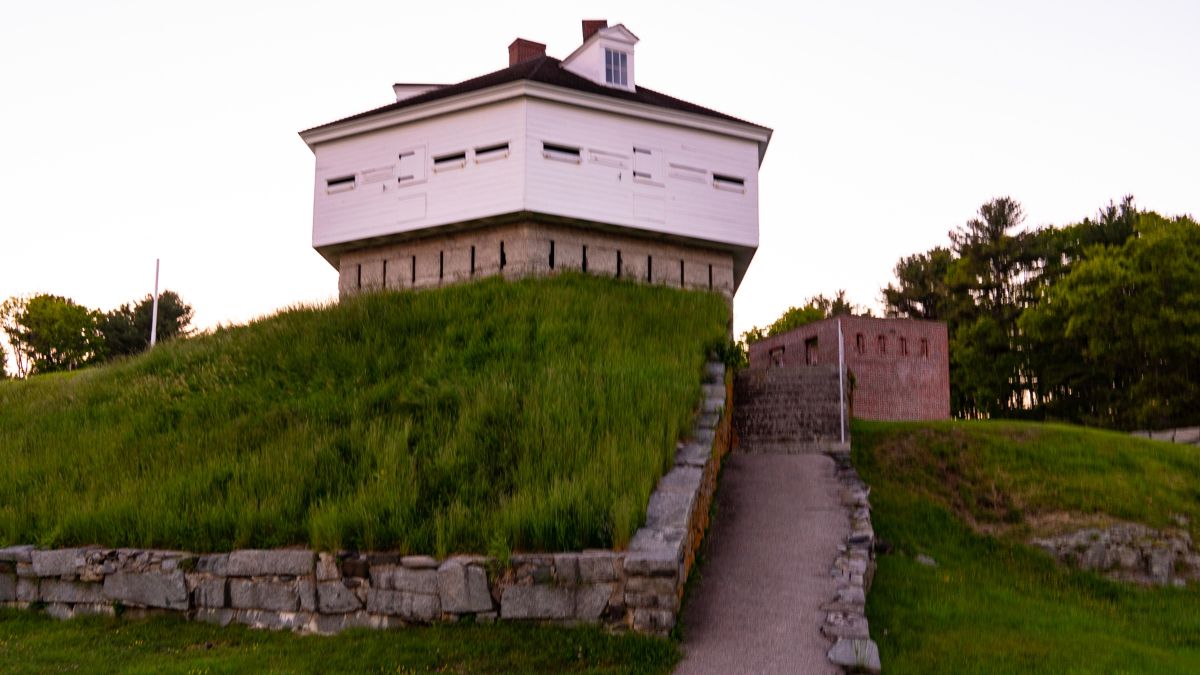
Fort McClary is a revered national historic place, one of a few historic forts in Kittery Point, Maine. This landmark fortification has been integral to Maine’s coastal defense since the American Revolutionary War.
It has witnessed several significant periods of American history, including the War of 1812, the Civil War, and the Spanish-American War. With its well-preserved military structures, Fort McClary is an essential representation of changing military technology in the United States over the centuries.
The fort is named after New Hampshire native Major Andrew McClary, who fought and died in the Battle of Bunker Hill during the American Revolution. Fort McClary’s strategic location on the Piscataqua River made it a critical point of defense for the harbor and the nearby naval shipyard.
Throughout its history, Fort McClary was upgraded to accommodate advancements in military technology. From simple earthworks and wooden barricades in the Revolutionary era, it evolved to incorporate blockhouses, ramparts, barracks, and eventually, concrete and steel structures by the time of the Spanish-American War.
This progression reflects changes in military architecture and provides insights into the evolution of warfare tactics and the historical context that drove these advancements.
Fort McClary Today
Today, visitors to Fort McClary can explore the fort’s grounds and various preserved military structures. These include the 1844 Blockhouse, the rifled gun battery, the barracks, the guardhouse, the storehouse, and the mine Casemate, among others. Each structure provides a tangible connection to the past and its role in shaping the nation’s history.
The Fort McClary State Historic Site Visitor Center is an important part of the visitor experience. The center offers interactive exhibits, interpretive panels, and historical artifacts that narrate the story of the fort, its construction, and its role in the different conflicts it was part of.
Knowledgeable staff and volunteers can answer questions and provide in-depth guided tours, ensuring visitors of all ages can appreciate the site’s historical significance.
The Fort McClary Visitor Center’s educational programs and events are also key features. These often include Revolutionary War and Civil War reenactments, cannon firing demonstrations, and history talks, making history come alive for visitors.
Fort Halifax
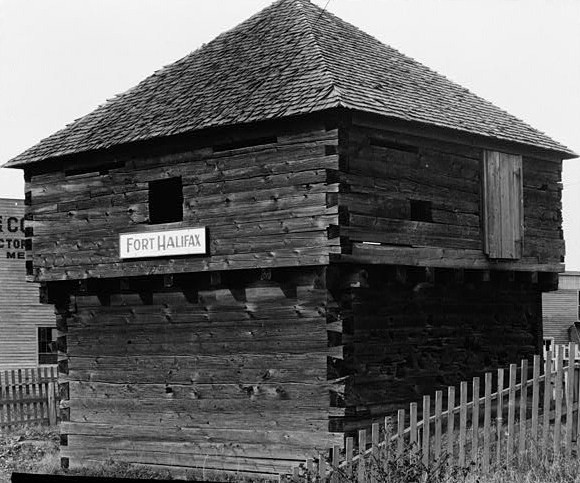
Fort Halifax, perched on the banks of the Kennebec River in Maine, is an important historical site dating back to the French and Indian Wars. It was constructed as a key trading post and defensive structure, reflecting the interplay of commerce and conflict in the colonial era. Named after George Montagu-Dunk, the 2nd Earl of Halifax, the fort was instrumental in safeguarding the region during colonial unrest.
The fort’s position along the Kennebec River underscored its strategic importance. The river, a vital transportation and communication route, was critical for moving goods, people, and information. Thus, the fort was a guardian of these essential lifelines while facilitating trade and commerce.
During its active years, Fort Halifax was an epicenter of human activity, echoing the voices of soldiers, settlers, traders, and Indigenous peoples. It stood as a symbol of colonial authority and protection, its walls witnessing countless stories of courage, conflict, and commerce.
Fort Halifax Today
Today, Fort Halifax is not just an echo of the past but a tangible connection to Maine’s rich history. It is a testament to the crucial role forts played during the colonial days in protecting settlements, facilitating trade, and negotiating with native populations.
The Fort Halifax State Historic Site Visitor Center is vital to the visitor experience. Here, guests can learn about the fort’s history through interpretive exhibits and panels. These displays delve into the fort’s construction, the geopolitical dynamics of the French and Indian Wars, the soldiers’ lifestyle, and the intricate web of trade that the fort facilitated.
Interactive displays and historical artifacts provide a more tactile connection to history, allowing visitors to touch, explore, and better understand the colonial period. The visitor center also hosts lectures and presentations by historians, archaeologists, and experts, who provide insights into the region’s past and the fort’s significance.
Guided tours of the fort are available. Tour guides well versed in the fort’s history provide a detailed narration of its past, its role in the French and Indian Wars, and its broader significance in colonial history.
Fort Kent

Fort Kent, a historic site in the town of the same name in Maine, is recognized for its strategic location near the Canadian border. This fort was constructed during tension between the United States and British Canada, known as the Aroostook War.
Despite the name, the “war” was largely a boundary dispute involving no actual battles. Nevertheless, it highlights the role forts played in representing authority and maintaining security during geopolitical tension.
The fort’s location near the Canadian border indicates its strategic importance during this disputed period. It stood as a sentinel, deterring potential incursions from British Canada and solidifying American presence and claim in the region. Although it never saw battle, Fort Kent symbolized the readiness of the United States to defend its territories, ensuring peace through the show of strength.
Fort Kent’s construction and layout likely provide insights into the defensive strategies of the time and the resources and techniques used in fort-building during this period of American history. The fort, therefore, serves as a tangible connection to this time of tension and uncertainty.
Fort Kent Today
Today, Fort Kent is a monument to this lesser-known period in Maine’s history. The fort and its surroundings are preserved as a state historic site, and the structure is on the National Register of Historic Places, underlining its historical significance.
Visitors to Fort Kent State Historic Site are welcomed at the Visitor Center. Here, they can learn about the Aroostook War, the construction of the fort, and life on the Maine-Canadian border during this time of tension. The Visitor Center hosts a range of exhibits, interpretive displays, and artifacts related to the fort and the period during which it was active.
Guided tours of Fort Kent are available, offering in-depth insights into the fort’s history, architecture, and strategic role. Knowledgeable guides provide captivating stories and historical facts, bringing the past to life.
The Visitor Center also organizes events throughout the year, such as reenactments, history talks, and special exhibitions. These events provide a unique and engaging way for visitors of all ages to learn about this important chapter of Maine’s history.
Fort Gorges
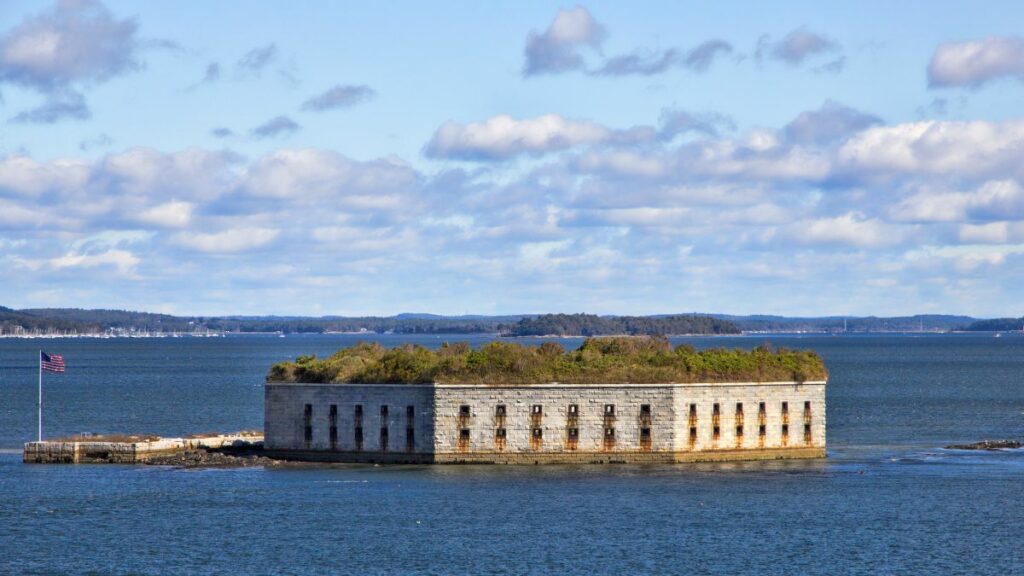
Fort Gorges, nestled in the heart of Casco Bay off the coast of Portland, Maine, is a historical treasure of significant value. Constructed in the aftermath of the American Civil War, the fort represents a period of transition and adaptation in America’s defense strategies.
Although it was built with coastal defense in mind, the fort never witnessed active military action, primarily due to advancements in military technology, which rendered its design obsolete shortly after completion.
Named after Sir Ferdinando Gorges, the colonial proprietor of Maine, the fort is built from robust granite. Its unique architectural style reflects the time’s defense philosophies and construction techniques. The imposing structure and its location on Hog Island Ledge make it an iconic feature of Casco Bay.
In contemporary times, Fort Gorges is under the custodianship of Friends of Fort Gorges. Committed to the preservation, enhancement, and public enjoyment of this historic site, the organization plays a crucial role in maintaining the fort’s integrity and ensuring its history is shared with future generations.
Visiting Fort Gorges
Visiting Fort Gorges is a unique experience, blending adventure, natural beauty, and history. Since the fort is only accessible at low tide, careful planning is required. Visitors can kayak or take a private boat to the fort, adding an exciting maritime component to the historical exploration.
Once on the fort’s grounds, visitors can explore the vast granite structure, the parade grounds, the gun emplacements, and the powder magazines, all of which provide tangible connections to the past. The fort offers breathtaking panoramic views of Casco Bay and Portland, making it a fantastic spot for photography.
The Visitor Center at Fort Gorges provides a wealth of information about the fort’s history, construction, and intended role in coastal defense. Here, guests can engage with interactive exhibits, detailed interpretive displays, and historical artifacts related to the fort and the era of its construction. The Visitor Center also offers guided tours led by knowledgeable guides who share fascinating stories and facts about the fort’s past.
The Friends of Fort Gorges frequently organizes events at the fort, such as historical reenactments, living history demonstrations, concerts, and educational programs.
Fort Levett
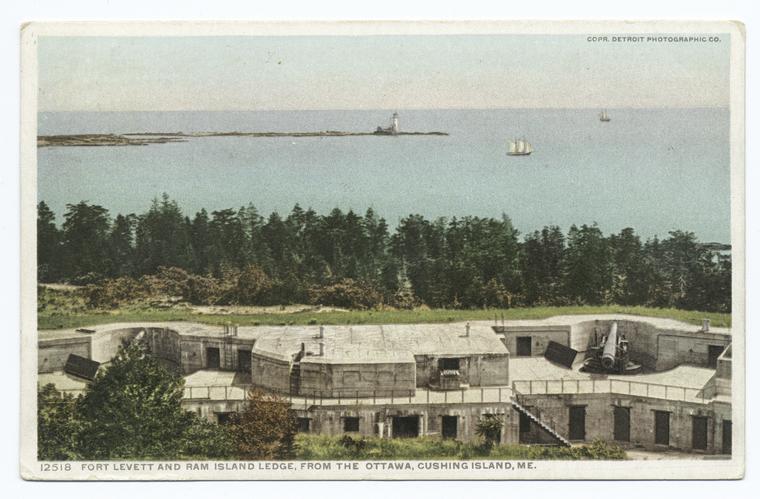
Fort Levett, situated on Hog Island Ledge in Casco Bay, Maine, carries a rich and layered history dating back to the 17th century. The fort was constructed under the supervision of Sir Ferdinando Gorges, an influential English colonial proprietor who played a significant role in the early development of the New England region.
Named in honor of Gorges’ home in England, Fort Levett was erected as a bulwark to protect the city of Portland and its surrounding communities from potential threats, highlighting the strategic importance of this region during colonial times.
Fort Levett’s architecture and design reflect its era’s military strategy and construction methods. Its location on Hog Island Ledge further emphasizes the fort’s primary role in defense, as it overlooks a significant expanse of Casco Bay, offering a vantage point for detecting and responding to potential threats.
In its heyday, Fort Levett would have been a bustling site filled with soldiers and support personnel, all playing their part in maintaining the region’s security. Today, the fort’s significance extends beyond its military history as a window into the colonial era and geopolitical tensions.
Despite the rich history that Fort Levett embodies, parts of the fort have been closed to the public due to safety concerns. This measure underscores the need to balance the preservation of historical sites with ensuring the safety and well-being of visitors.
Visiting Fort Levett
Nevertheless, visitors to the fort can still appreciate its history and role in protecting Portland and surrounding areas. The Fort Levett Visitor Center plays a key role in facilitating this understanding.
The center hosts a range of exhibits, interpretive displays, and historical artifacts that bring the fort’s history to life. These displays delve into Sir Ferdinando Gorges’s life, the fort’s construction, its role in defense, and its significance in the broader historical context of Maine and New England.
The Visitor Center also offers guided tours. These tours provide visitors with an in-depth exploration of the fort’s history, its strategic importance, and the challenges faced in preserving such sites. Visitors are also educated about the reasons behind the closure of certain parts of the fort and the ongoing efforts to ensure its preservation.
The Visitor Center also organizes various educational programs and events, such as lectures by historians and archaeologists, demonstrations of colonial-era military techniques, and history-themed activities for children. These events enhance visitor engagement and foster a deeper appreciation for Fort Levett and its historical place.
Fort George

Fort George, located in the historic town of Castine, Maine, is a tangible reminder of the turbulent times of the Revolutionary War. It is famously known as the site of the Penobscot Expedition, the most catastrophic naval disaster in American history until Pearl Harbor, illustrating the successes and failures of American forces during this critical period.
The Penobscot Expedition was a military conflict between a British garrison at Fort George and a vastly superior American naval and land force. The American forces, unfortunately, suffered a humiliating defeat due to miscommunication, miscalculations, and a well-fortified British defense. The fort’s remaining structure is thus a symbol of resilience, highlighting the challenges faced and lessons learned during the Revolutionary War.
Today, Friends of Castine Fortifications, a dedicated nonprofit organization, is responsible for preserving Fort George. Their commitment ensures that the fort and its rich, complex history remain part of Maine’s cultural and historical tapestry. Through their efforts, the fort stands as an enduring symbol of the past, helping us understand the triumphs and trials of those who lived through the Revolutionary War.
Visiting Fort George
The Fort George Visitor Center offers a comprehensive history of the site. It houses exhibits featuring historical artifacts, interpretive displays, and interactive installations that help visitors understand the Penobscot Expedition’s strategic significance and the fort’s role in it.
These exhibits delve into the operational complexities of the expedition, the life of the soldiers stationed at the fort, and the broader context of the Revolutionary War.
Guided tours are available to provide a more detailed exploration of the fort and its history. These tours are led by guides who vividly bring the fort’s past to life. They offer insights into the tactical decisions made during the Penobscot Expedition, the fort’s construction, and eventual fate.
The Friends of Castine Fortifications organize various events and activities, including reenactments of the Penobscot Expedition, history talks, and educational programs. These events provide an engaging and immersive way for visitors to connect with the history of Fort George.
Fort O’Brien
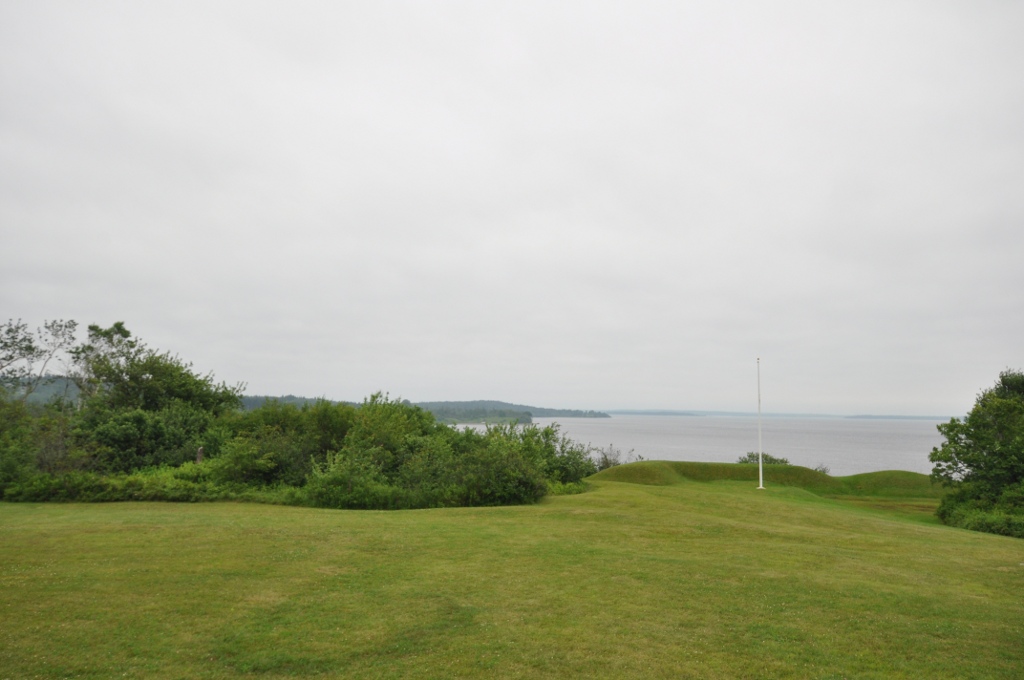
Located in Machiasport, Maine, Fort O’Brien is a historical site of considerable importance. Erected during the turbulent times of the Revolutionary War, the fort served as a minor fortification, protecting the region and providing a strategic outpost for American forces.
Its significance is underscored by the action it saw during the War of 1812 when British forces attacked it. This attack demonstrated the fort’s strategic value and its role in the broader defense network of the region. The fort’s construction, design, and history reflect the evolution of military strategy during this time.
Today, the Maine Bureau of Parks and Lands manages Fort O’Brien State Historic Site. The site is more than just a historical landmark; it’s where the past comes alive, offering visitors a chance to learn about a crucial period in American history.
Visiting Fort O’Brien
Visitors to Fort O’Brien can embark on informative tours that delve into the fort’s history. These tours provide insights into the fort’s strategic role, the attack by British forces during the War of 1812, the life of soldiers stationed there, and the broader historical context of its operation.
The tours also provide fascinating information about the fort’s design and construction, offering an in-depth understanding of military architecture during the Revolutionary War and the War of 1812.
Fort Fairfield
Situated close to the Canadian border in Fort Fairfield, Maine, Fort Fairfield is a site of substantial military and historical importance. Constructed during the Aroostook War, a boundary dispute between British Canada and the state of Maine in the early 19th century, the fort served a crucial role in safeguarding the region and its inhabitants. Later, it was used during the Civil War, further cementing its place in Maine’s military history.
The fort’s strategic location underscores its importance. Being near the Canadian border meant Fort Fairfield was critical in asserting American sovereignty and protecting the state from external threats. Over the years, it has symbolized protection and vigilance for Maine and its citizens.
Fort Fairfield Today
Today, the fort remains an active part of Maine’s military history. The original fort no longer exists, but a full-scale replica, built in 1976 as part of the United States Bicentennial, stands at the original site. This replica is a tribute to the fort’s history and a testament to the architectural and strategic considerations of the period.
The Fort Fairfield Blockhouse, a part of the replica, serves as the Visitor Center and museum. The museum hosts an array of exhibits featuring historical artifacts, documents, and displays that narrate the fort’s history.
These exhibits delve into the Aroostook War, the fort’s role during the Civil War, and the daily lives of the soldiers stationed there. Interactive exhibits provide a hands-on learning experience, making history accessible and engaging for visitors of all ages.
Guided tours of Fort Fairfield are available. During these tours, visitors get an in-depth view of the fort’s structure, strategic role, and the historical context of its operation. The stories and anecdotes shared by the guides bring the fort’s past to life, offering an immersive historical experience.
Fort Fairfield hosts various community events throughout the year, such as historical reenactments, educational workshops, and local celebrations. These events help unite the community and engage visitors with the fort’s rich history.
Related: 10 Historic Forts in Texas
Fort Preble

Located at Spring Point in South Portland, Fort Preble is an emblem of Maine’s military history. Established in the early 19th century, this coastal defense fortification played a crucial role in safeguarding Portland Harbor for over a century until the end of World War II. Its strategic location provided a vantage point for monitoring sea traffic and potential maritime threats, making it an integral part of the region’s defense mechanism.
Fort Preble, named after Commodore Edward Preble, a figurehead in the United States Navy, showcases the evolution of coastal defense technology. During its active years, it saw several upgrades and modifications to keep pace with the changing dynamics of warfare and military strategy. From the War of 1812, the Civil War, Spanish-American War to both World Wars, the fort remained a critical defense post.
Today, much of Fort Preble has been repurposed for educational use by the Southern Maine Community College. Still, some parts of the fort, including several original gun batteries and a parade ground, have been preserved and are open to the public.
Visiting Fort Preble
The Fort Preble Visitor Center serves as the primary information hub for visitors. The center features exhibits detailing the fort’s history and role in conflicts. Visitors can explore artifacts, photographs, military equipment, and informative displays illuminating the fort’s operational years. Interactive installations at the center provide an engaging learning experience for children and adults.
Guided tours offer visitors a deeper understanding of the fort’s history, architecture, and strategic significance. These tours navigate through the preserved areas of the fort, discussing its function during various periods, the life of the soldiers stationed there, and the fort’s broader historical context.
Special events and educational programs are also held at the site, enhancing the visitor experience. Historical reenactments, expert talks, and themed workshops illuminate Fort Preble’s past and its relevance to Maine’s military history.
Visitors can also appreciate the natural beauty surrounding the fort. The site offers panoramic views of Portland Harbor, providing a serene environment for picnics or leisurely walks.
Related: Historic Forts in Portland Maine: A Complete Guided Tour
Brief History of Forts in Maine
Colonial Period
Colonial Maine, once the northeastern frontier of the new world, was a dangerous and often hostile environment for early settlers. Indigenous tribes and foreign powers, like the French, constantly threatened the English settlements. A network of forts was developed to protect the inhabitants and defend against potential threats and aid trade.
One of the key figures behind the development of these forts was Sir Ferdinando Gorges, a prominent English colonial entrepreneur. Gorges established the Province of Maine in the early 17th century.
He was heavily involved in colonizing New England and was particularly focused on the strategic security of these early settlements. Gorges initiated the construction of several forts throughout the territory, underscoring the importance of these structures in establishing English presence and dominance in the region.
One of the best examples of Gorges’ commitment to strategic defense was Fort William Henry, located at the mouth of the Kennebec River. This prime location offered a multitude of benefits. Firstly, its position at the mouth of the river allowed the fort to effectively control river traffic, a key component of the region’s trade.
Goods like furs, timber, and fish were often transported along the river, making it an essential trade route for the settlers. By controlling the mouth of the river, Fort William Henry helped protect these valuable commodities and foster economic growth.
The fort’s strategic location provided a strong deterrent to potential threats. It was not just a defense against land-based attacks but also against naval incursions, given its position overlooking the Atlantic Ocean. The mere existence of the fort was a formidable deterrent to any potential enemies considering an assault on the settlements.
The garrison would have had the necessary provisions and artillery to repel an attack inside the fort. These would have included cannons, small arms, and ammunition. Also, the forts often served as a refuge for settlers during heightened tension or outright conflict.
Revolutionary War

During the American Revolution, the vast network of forts in Maine played a pivotal role in the strategies of both American and British forces. These forts were not only defensive installations but also served as bases for military operations and as centers for regional control.
One such fort was Fort George in Castine, strategically located at the mouth of the Penobscot River. In 1779, the fort was captured by the British forces in a bid to reestablish their control over the eastern seaboard. Recognizing the importance of the location, the Americans launched the Penobscot Expedition, a naval and military expedition, to recapture it.
Although the expedition was ultimately unsuccessful, leading to one of the worst naval disasters in American history, it underlined the strategic significance of Maine’s forts.
Maine’s biggest city, Portland, also participated in the fortification efforts. Fort Preble, built in 1808, was located at Spring Point in South Portland and was primarily used for defense against potential British naval incursions.
On the other hand, Fort Hancock was established on Hog Island Ledge to bolster the Portland harbor defense further. These forts represented the broader efforts to strengthen American defenses and maintain control over key territories during the Revolutionary War.
Benedict Arnold
A notable figure associated with Maine’s forts during the Revolutionary War was Benedict Arnold, a respected general in the Continental Army before his notorious treason.
Arnold led an expedition, known as the Arnold Expedition, through the Maine wilderness in an attempt to attack Quebec City in 1775. The expedition set off from Old Fort Western, located on the banks of the Kennebec River in Augusta. Old Fort Western, a substantial log fort built in 1754, was a crucial regional stronghold and storehouse.
Arnold and his men utilized Old Fort Western as a launching point, gathering supplies and information before undertaking the arduous journey to Quebec. This expedition, despite failing, demonstrated the vital role that Maine’s forts played in military operations, offering critical support to American forces during the Revolutionary War.
War of 1812
During the War of 1812 between the United States and the British Empire, Maine’s forts continued to play essential roles in safeguarding the region’s inhabitants and interests. The hostilities of the war brought a renewed emphasis on defensive fortifications, and Maine was no exception, with several key forts constructed and utilized during this period.
Fort Halifax was one such structure strategically located on the banks of the Kennebec River in Winslow, Maine. It was built in 1754 during the French and Indian War and was crucial in the War of 1812.
The fort was primarily used as a garrison and storehouse. Its position on the Kennebec River allowed it to control movement along the river, and its proximity to nearby settlements made it a valuable defensive structure during times of conflict. Its strategic location would have made it a prime target for British forces seeking to disrupt American control of the region.
Another significant fortification from this era was Fort Popham, built at the mouth of the Kennebec River near Phippsburg. Constructed in 1861, Fort Popham wasn’t directly involved in the War of 1812 but is a reminder of the ongoing importance of coastal fortifications for the defense of Maine.
Made of granite and designed to house up to 36 cannons, it had an impressive deterrent effect, guarding against potential naval invasions and protecting vital shipping lanes.
Aroostook War
The Aroostook War, often referred to as the “Pork and Beans War”, was a non-violent dispute that occurred between the United States and British North America from 1838 to 1839. This conflict was centered around an undefined border between Maine and New Brunswick, particularly in the Aroostook River region.
Although no actual warfare took place, the tension and threat of potential military action led to the building of additional fortifications in Maine.
Fort Kent was one such structure built during this time. Constructed in 1839, it was located at the convergence of the Fish and Saint John Rivers, providing a strategic location for controlling and monitoring these key waterways.
Its position in the northernmost part of Maine, near the Canadian border, allowed the U.S. forces to maintain a military presence in this contested region. Although the fort never saw combat, its construction represented a significant statement of intent. It served as a clear message to British forces about the United States’ determination to hold and control the disputed territory.
Similarly, Fort Fairfield was constructed in 1839 during the Aroostook War. The fort was built to defend against potential British incursions in central Aroostook County. Named after Governor John Fairfield, the fort served as a show of force, a deterrent, and a protective measure for settlers in the disputed territory.
Ultimately, the Aroostook War was resolved diplomatically with the Webster-Ashburton Treaty in 1842, which defined the Maine-New Brunswick border. The forts built during this time, including Fort Kent and Fort Fairfield, demonstrated American resolve during the dispute. Although they never saw combat, their presence likely contributed to the peaceful resolution of the conflict.
Civil War
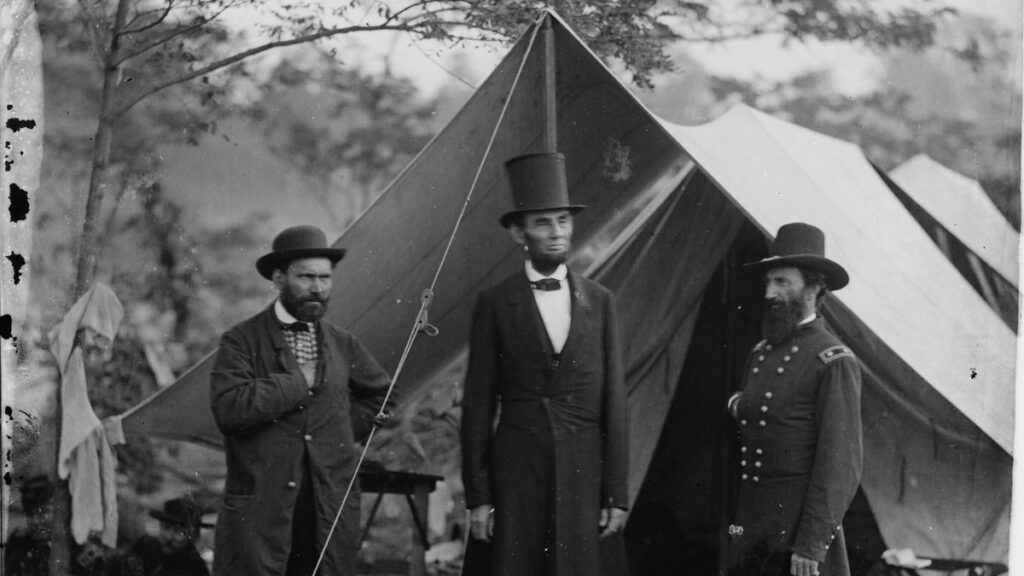
During the American Civil War (1861-1865), Maine was a critical participant in the Union’s military strategy, and its forts played a vital role in ensuring regional security, especially against potential Confederate naval incursions. The state’s extensive coastline and key river passages made it a region of significant strategic value, and the forts constructed or enhanced during this period reflect that importance.
Fort Knox, named after Henry Knox, the first United States Secretary of War, is located on the western bank of the Penobscot River. Constructed primarily of granite, the fort was built between 1844 and 1869.
Although it saw no combat during the Civil War, it was a deterrent against potential Confederate raiders. The fort’s commanding position on the river and its robust construction effectively controlled and monitored this crucial waterway.
Fort McClary, located at Kittery Point, was another significant fortification. Named after Major Andrew McClary, who died at the Battle of Bunker Hill, the fort played a crucial role in the coastal defense of Maine and the Portsmouth Naval Shipyard in Kittery. Its strategic location allowed it to oversee and protect the entrance to the Piscataqua River, a vital channel for ship traffic and trade.
Forts Constructed of Granite
Granite forts, like Fort Gorges and Fort Scammel, further bolstered Maine’s coastal defense efforts. Fort Gorges, built on Hog Island Ledge in Casco Bay, was named after Sir Ferdinando Gorges, the colonial proprietor of Maine. Although its construction was completed after the Civil War, its initial construction was influenced by the need for enhanced coastal defenses during the war.
Fort Scammel, located on House Island in the harbor of Portland, Maine, was an essential part of the coastal defense network. Its granite construction made it a formidable defensive structure, providing additional protection for the strategic harbor of Portland.
These forts underscore Maine’s fortifications’ vital role during the Civil War. Their strategic locations allowed for effective surveillance and control of critical coastal and river passages, serving as formidable deterrents to potential Confederate threats.
Even though they did not see active combat, their presence was crucial in maintaining the region’s security during this turbulent period. These forts remain significant historical landmarks highlighting Maine’s contributions during the Civil War.
World Wars
During the 20th century, Maine’s forts played a crucial role, especially during the World Wars. The strategic importance of Maine’s coastline and its significant shipping lanes made it a focal point for military preparedness and action.
Fort Williams, constructed in 1872 in Cape Elizabeth, was integral to Maine’s coastal defenses during both World Wars. It served as the headquarters of the Harbor Defenses of Portland and featured several artillery batteries for coastal defense. It was crucial in monitoring maritime traffic and defending Portland Harbor and its essential shipping lanes against potential enemy naval threats.
Fort Foster Park in Kittery Point provided additional coastal security, featuring gun batteries and a control station for underwater mines during World War II. Its strategic location near the mouth of the Piscataqua River protected the Portsmouth Naval Shipyard, a vital facility for the U.S. Navy.
Fort Baldwin, named after Jeduthan Baldwin, an engineer in the Continental Army during the American Revolution, was built during World War I. It bolstered the defensive line near Phippsburg, protecting the critical shipbuilding facilities and important shipping routes in Bath and along the Kennebec River.
Fort McKinley, located on Great Diamond Island in Casco Bay, was constructed during World War II. It was one of the primary fortifications designed to protect Portland Harbor. With its extensive system of gun batteries and other military installations, it was a vital component of the harbor’s defensive network.
Maine’s military installations of this period also included formidable granite fortifications and batteries. An example is Battery Steele, situated on Peaks Island in Casco Bay. Constructed in 1942, it was the largest and most heavily armed battery in the Harbor Defenses of Portland during World War II.
Conclusion – Forts in Maine
The forts of Maine have stood the test of time and offer a unique window into the past, from the days of the American Revolution and Benedict Arnold to the strategic defense efforts during the World Wars, revealing the story of Maine’s role in defense of the United States and New England’s rich coastal heritage.
Have you visited any of these forts in Maine? If you have, please leave a comment below telling us about your experience. We love hearing from our readers and their fort visits!

Cory is a website owner and content creator who enjoys fishing, history, coin collecting, and sports, among other hobbies. He is a husband and father of four.
Romans 15:4 For whatever was written in former days was written for our instruction, that through endurance and through the encouragement of the Scriptures we might have hope.

